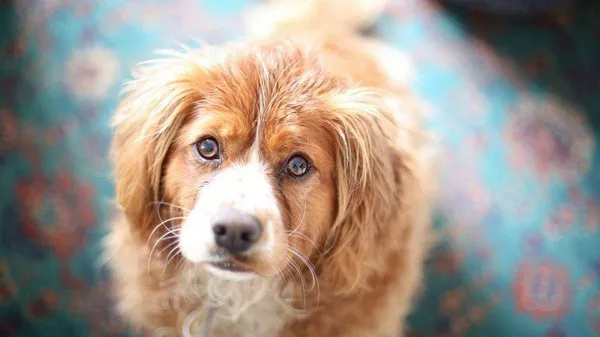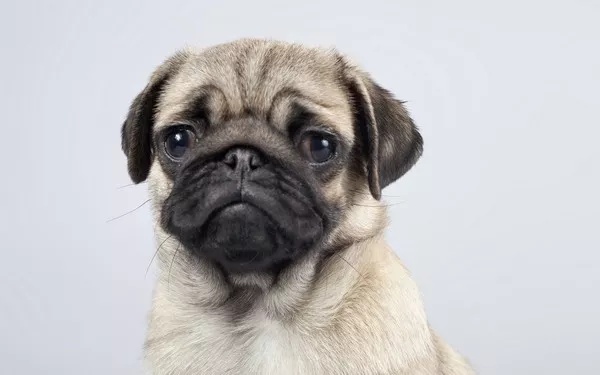When it comes to cat breeds, few evoke the same level of curiosity and admiration as the Egyptian Mau. Known for their striking appearance, unique spots, and fascinating history, these cats are not only beautiful but also come with a delightful array of quirks. As we dive into the world of the Egyptian Mau, one question tends to arise: can these majestic felines ever sport an orange coat?
This article will explore the intricate relationship between cat colors, genetics, and the delightful traits of the Egyptian Mau. We’ll journey through the vibrant palette of cat colors, debunk myths, and unveil the hidden science behind why you may never find an orange Egyptian Mau. So grab a snack, snuggle up with your furry friend, and let’s embark on this colorful adventure together!
The Allure of the Egyptian Mau
To understand the Egyptian Mau, we must first delve into its history and unique characteristics. The Egyptian Mau is one of the oldest known domestic cat breeds, tracing its lineage back to ancient Egypt. These cats were often depicted in hieroglyphics and were revered for their beauty and hunting prowess. The Mau is distinguished by its distinctive spotted coat, resembling that of a leopard, and its striking green eyes.
The Egyptian Mau is not just a pretty face; they are intelligent, social, and incredibly affectionate. They often form strong bonds with their human companions and are known for their playful antics. This breed is also quite vocal, often communicating through a series of chirps and trills, adding to their charming personality.
But let’s circle back to the question at hand: can Egyptian Maus be orange? The short answer is no. However, the journey to understanding this answer is full of interesting facts about cat genetics and color.
Understanding Cat Color Genetics
Cat coat color is a result of complex genetics. In essence, a cat’s color is determined by a combination of various genes that control pigmentation. The primary colors in the feline palette are black, white, red (or orange), and cream. Each of these colors can have various patterns, such as solid, tabby, or spotted.
The color orange in cats is primarily produced by the O gene, which is sex-linked. This means that the gene for orange is found on the X chromosome. Male cats (XY) can either have one or two copies of the orange gene, while female cats (XX) need two copies of the orange gene to express the color. As a result, orange male cats are more common than female ones.
When we apply this genetic principle to the Egyptian Mau, we find that the breed has specific color requirements that do not include orange. According to the breed standard, the Egyptian Mau comes in three primary colors: bronze, silver, and smoke. Each of these colors showcases the breed’s distinctive spots and patterns, further enhancing their unique charm.
The Egyptian Mau Color Palette
Bronze: This is the most recognized color for the Egyptian Mau. The base color is a warm golden hue, resembling the sun-kissed sands of Egypt. The spots are typically black, creating a stunning contrast that highlights the cat’s muscular build and elegant appearance.
Silver: Silver Maus have a light grayish-white base coat with dark spots. This color gives them a sophisticated and ethereal look. The silver hue is a result of a specific gene that dilutes the base color, enhancing the contrast between the spots and the background.
Smoke: The smoke variant has a unique appearance where the roots of the hair are darker, transitioning to a lighter tip. This gives the cat a ghostly, mystical look. The spots in smoke Maus may be less prominent, but they add to the allure of this rare color.
Why Orange is Off the Table
Given the breed standards and the genetics at play, orange is not an option for Egyptian Maus. The absence of the orange gene in their genetic makeup means that even if a Mau were to exhibit a similar hue, it wouldn’t meet the breed standards and would not be classified as a true Egyptian Mau.
In essence, the striking patterns and colors of the Egyptian Mau are a testament to the breed’s rich history and unique genetics. While orange cats are a delight in their own right, the Egyptian Mau embraces its distinct color palette, which enhances its regal and ancient charm.
The Myth of Orange Egyptian Maus
While it’s clear that Egyptian Maus cannot be orange, this myth might persist for a few reasons. First, many people are unfamiliar with the intricate genetics of cat colors. They may assume that because orange is a common color in other breeds, it should apply to all cats.
Additionally, there are many domestic cats that exhibit similar spotting patterns, leading to confusion. For example, the Bengal cat also showcases spots and has an exotic appearance. However, Bengals can come in a range of colors, including orange. This similarity can lead to the false impression that an orange Egyptian Mau exists.
Furthermore, some pet owners might encounter cats that they believe to be Egyptian Maus due to their resemblance, but those cats might actually belong to a different breed or even a mixed breed. This could easily lead to misidentification and the belief that orange Maus exist.
The Orange Cat Phenomenon
While we may never see an orange Egyptian Mau, orange cats themselves are incredibly popular and charming. These felines, often referred to as “ginger” or “red” cats, have stolen the hearts of many. The orange coat is a result of the O gene mentioned earlier, and they come in various patterns, including tabby, solid, and spotted.
One of the most famous orange cats is Garfield, the lasagna-loving cartoon feline. His popularity has helped shape the public’s perception of orange cats as quirky and lovable. In reality, orange cats are often described as friendly, social, and laid-back. They tend to have playful personalities and can be quite affectionate, making them ideal companions.
Famous Orange Cats in History
Garfield: As mentioned, Garfield is a fictional cat who loves food and naps. He has become an icon in popular culture, representing the carefree and humorous nature of orange cats.
Hobbes: From Bill Watterson’s comic strip “Calvin and Hobbes,” Hobbes is a stuffed tiger who comes to life in the imagination of Calvin. His playful spirit and wit reflect the playful nature of many real-life orange cats.
Puss in Boots: This charming character from “Shrek” and his own spin-off film is a skilled swordsman with a heart of gold. His orange coat and charismatic personality make him a beloved character.
These famous orange cats have solidified the notion that orange felines are not only adorable but also full of personality.
The Role of Color in Cat Ownership
While color may not be the most critical factor in choosing a cat, it certainly plays a role in how we perceive and connect with our feline friends. Cat owners often develop a bond with their pets based on shared experiences, personalities, and yes, sometimes the color of their coats.
See Also: Tabby Cat vs Egyptian Mau: What’s The Difference?
When adopting a cat, many people are drawn to specific colors or patterns based on personal preferences or cultural associations. For example, some cultures view black cats as symbols of good luck, while others might associate them with superstition. On the other hand, orange cats often carry connotations of warmth and cheerfulness.
The Diversity of Cat Colors
Cats come in a stunning array of colors and patterns, which can be fascinating to explore. Here are a few notable mentions:
Black: Black cats are often misunderstood due to superstitions. However, they are incredibly affectionate and often have shiny, luxurious coats that can make them stand out.
Calico: Calico cats have a unique color pattern featuring white, black, and orange patches. They are mostly female, as the genes responsible for their coloring are linked to the X chromosome.
Siamese: Siamese cats are known for their striking cream bodies and darker extremities (ears, paws, tail). They are vocal, social, and often form deep bonds with their humans.
Tabby: Tabby cats can come in various colors, including orange, gray, and brown. The classic tabby has a distinctive “M” marking on its forehead and stripes on its body.
Personality Traits Linked to Color
Research suggests that a cat’s coat color may be associated with certain personality traits. For example, orange cats are often described as being friendly and outgoing, while tortoiseshell cats may exhibit more sassy and independent behaviors.
However, it’s essential to remember that these are generalizations and that every cat is an individual with its own unique personality. Factors such as socialization, environment, and upbringing can significantly influence a cat’s behavior, often overshadowing the impact of coat color.
The Importance of Responsible Breeding
When discussing cat breeds and colors, it’s crucial to emphasize the importance of responsible breeding practices. Ethical breeders focus on the health and temperament of their cats, prioritizing well-being over appearance. This includes genetic testing and ensuring that breeding pairs do not carry hereditary diseases.
By focusing on responsible breeding, we can ensure the health of the breed while preserving its unique characteristics. For those interested in adopting an Egyptian Mau, it’s vital to seek reputable breeders who adhere to ethical practices.
Conclusion
So, can Egyptian Maus be orange? The definitive answer is no. However, the journey to this conclusion has unveiled a colorful tapestry of genetics, history, and personality traits. The Egyptian Mau remains a captivating breed, with its bronze, silver, and smoke hues highlighting its rich heritage.
While orange cats may never be part of the Egyptian Mau family, they certainly have a special place in the hearts of cat lovers worldwide. Each cat, regardless of color or breed, brings joy, companionship, and laughter into our lives.
So whether you find yourself enchanted by the elegance of the Egyptian Mau or charmed by the playful antics of an orange cat, there is no shortage of love and laughter in the feline world. Embrace the beauty of all cat colors and cherish the unique personalities that make our furry companions so special!
Related Topics:


























